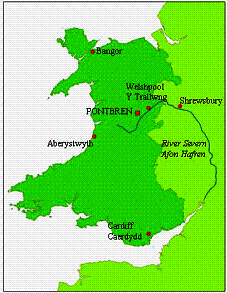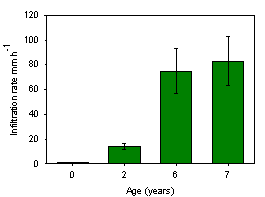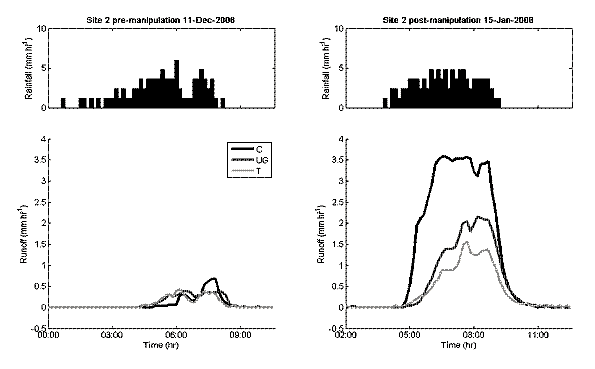Wastewater Forum Archive
WASTEWATER RESEARCH AND INDUSTRY SUPPORT FORUM
Meeting 24th November 2010
Please note that for older reports some links will be to sites that are no longer active.
This was the Forum’s 42nd meeting. It was held in the Boardroom of the Chartered Institution of Water & Environmental Management (CIWEM) in London. Members of CIWEM’s Wastewater Management Panel joined the Forum for the technical presentations and discussion.
Members of the Forum exchanged information about their research activities. A strength of the Forum is that members have a wide range of experience and an initiative or innovation that might seem valuable to some members might trigger concerns about undesirable unintended consequences from others. The European Commission’s latest working document on revision of the sludge directive was of great concern because the limit values do not appear to be related to risk to any receptors. The values for soils were of particular concern because large areas of European soils exceed these limits because of the naturally occurring concentrations. England and Wales has a comprehensive geochemical atlas of soils sample on a 5 km grid1 as Table 1 shows, a large proportion of soils exceed the Working Document’s suggested limit value. This would be acceptable if there would be a risk if the values were exceeded but that is not the case, the values derive from a soil survey in another Member State and what happens to be in those soils. If these values were adopted, it would merely preclude the possibility of completing the phosphate cycle through biosolids recycling
.
1 McGrath, S.P. and Loveland, P. J. (1992) The soil geochemical atlas of England and wales. Chapman & Hall, London.
Table 1 Percentages of soils in England and Wales that exceed the EC working documents suggested limit values
| pHCaCl2 |
63% < pH6 |
12% in range pH6-7 |
15% > pH7 |
| Cadmium |
28% > 0.5 mgCd/kgDS |
25% > 1 mgCd/kgDS |
7% > 1.5 mgCd/kgDS |
| Chromium (total) |
33% > 50 mgCr/kgDS |
6% > 75 mgCr/kgDS |
2% > 100 mgCr/kgDS |
| Copper |
90% > 40 mgCu/kgDS |
60% > 50 mgCu/kgDS |
2% > 100 mgCu/kgDS |
| Nickel |
30% > 30 mgNi/kgDS |
5% > 50 mgNi/kgDS |
2% > 70 mgNi/kgDS |
| Lead |
37% > 50 mgPb/kgDS |
23% > 70 mgPb/kgDS |
15% > 100 mgPb/kgDS |
| Zinc |
22% > 100 mgZn/kgDS |
&10% > 150 mgZn/kgDS |
6% > 200 mgZn/kgDS |
Severn Trent Water, which currently recycles 100% of its biosolids to agriculture, is researching with Aston University intermediate rate gasification of biosolids as a strategic contingency if the EU should be so foolish as to adopt something like the sludge and biowaste working document. Sticky tar has been a problem with gasification, which it is hoped would be overcome by intermediate rate gasification at 450 ºC. The oil product would be used in de-tuned CHP engines. It is currently at proof of concept but might not go to full scale. STW is also looking at a novel aerator that could cut the financial and carbon cost of activate sludge. It will probably install side-stream treatment of dewatering liquor to recover (or remove) nitrogen and phosphate. Bluewater Bio’s HYBACS (developed in Korea) , which is an evolution of RBC that promotes growth of bacillus that will degrade organic micropollutants and reduce the whole life cost of activated sludge are being researched as are anaerobic alternatives to aerobic secondary wastewater treatments. STW’s approach to IPR is that it is unlikely to want to own the IPR of innovations its research has helped to develop but would expect a financial return if the innovation is first to market.
Hydroventuri is a spin out from Imperial College that by applying physics to aeration has cut the energy demand of aerating wastewater or for example re-aerating water downstream of dams.
WRC is working on a river catchment model to assess the best [compromise] impact of water quality, global warming potential and cost [completion expected July 2011]. Defra is recognising that there should be a trade-off of environmental quality and population, etc. but the European commission has not yet accepted this.
HR Wallingford is working on an algorithm for stormwater mitigation by rainwater harvesting and infiltration; a rainwater tank can only intercept rainwater if it is empty before a rain event and there is therefore a tension with water utilisation. Concern is also emerging about there being sufficient water to flush sewers.
The Flood Risk Management Research Consortium is starting to work together well. Radar prediction of flash storms is still difficult. Interesting work is being done on the health (organic and mental) risks of flooding also on improving modelling of gullies.
CO2 Sequestration in landscapes
Howard Wood, Landscape & Environmental Services Ltd
Landscape & Environmental Services Ltd (LES) works in both the UK and France, where things are done differently. Municipal gardening is generally more intensive in France than it has become in the UK because of the greater autonomy of local government which as a consequence is more mindful of the desire of voters that their locale should look attractive and tidy. LES has been working with the Société Française des Gazons (equivalent of the Institute of Groundsmanship) on the carbon footprint of parks in comparison with other landscapes. A trial was sown in autumn 2005 and run for 30 months. The 6 ‘treatments’ were 5 grass species and 1 clover mix. The pre-trial soil organic matter content was 1.62% (this soil carbon was equated to be 77.6 t CO2/ha). The plots were mowed (all at the same frequency and height) and the clippings removed. As expected the soil organic matter content increased under the grass swards but interestingly it differed between treatments as did the carbon embodied in the root mass (Figure 1). It was hypothesised that red fescue roots were the most resistant to decay. Over time the treatments would have approached new equilibrium carbon contents asymptotically; 30 months is insufficient to know what this would have been.

LES undertook a case study of Romsey War Memorial Park in Hampshire, it totals 2ha of which 10% is hard-surface. Romsey War Memorial Park was estimated to contain a carbon pool of 778 tons of CO2 eq. The annual sequestration was 8.2 tonnes CO2/year and the emissions from landscape maintenance etc. were 1.5 tonnes CO2/ year. European citizens average about 10 t CO2/per capita.year. There is consideration within the Société Française des Gazons whether landscaping can be valued for climate change mitigation (by carbon sequestration) as well as for adaptation, by ameliorating heat island effect and modulating stormwater runoff.
The impact of upland land management on flood generation
Neil Mcintyre, Imperial College, London.
 Upland land management is generally perceived to affect flood response at local scales, but there has been little evidence to quantify this, or to examine effects at more relevant larger scales. These questions led to
Upland land management is generally perceived to affect flood response at local scales, but there has been little evidence to quantify this, or to examine effects at more relevant larger scales. These questions led to
 |
Figure 2 Effect of tree planting on soil
infiltration capacity |
the funding of the Pontbren experiment in Wales by the Flood Risk Management Research Consortium between 2004 and 2010. The area of the site was 17 km2 in the headwater catchment of the Upper Severn, the annual rainfall is 1.5m; further up the catchment it is 4m. It was grazed improved grassland (i.e. ploughed, reseeded, under drained and fertilised). The experiment included hydrological instrumentation at plot, field and catchment scales. Plot scale manipulation experiments have illustrated the significant local scale effects of excluding sheep and/or planting trees, but also that these effects can be small compared to the direct effects of weather on soil structure. The field and catchment scale experiments have indicated that the management of grazed grassland has an impact at larger scales with intensively grazed grassland producing more flashy flood responses. Finally, simulation modelling, supported by the Pontbren data, shows that strategic tree planting can lead to significant reductions in flood peaks and volumes, although with decreasing effectiveness as the rainfall becomes more extreme. Before tree planting the soil infiltration capacity had been very low but six years after planting this had increased 100-fold (Figure 2), which is the same effect as reported for green-infrastructure rain-gardens in urban areas (e.g. Portland, OR). Tree shelter belts have also improved sheep health. They cover 10% of the grazed area. The modelling analysis is being extended to a wider range of land management questions in the Hodder and Severn catchments.
Figure 3 Effect of treatments on runoff (before the trial, December 2006, left and after establishment of the treatments in January 2008, right)
Based on the field observations a model was constructed that predicted removing all the trees would cause a 13% increase in flood peaks compared with the baseline condition for frequent events and increase flood peaks 5% for extreme events. Adding tree shelter belts to all grazed grassland sites would decrease flood peaks from frequent events by 29% and by 5% for extreme events. If there were full afforestation flood peaks from frequent events would decrease by 50% decrease compared with the baseline condition and by 36% for extreme events, however it would completely transform the landscape.
15th European Biosolids & Organic Residuals Conference
Nigel Horan, AquaEnviro and Leeds University.
There was an interesting shift in the profile of the participants. There were 258 attendees from 18 countries which was similar to the long-term average but 65% were associated with the waste industry whereas the water industry has been predominant in the past. It was good to see this conference being used to share information between sectors. There were more exhibitors (29) than in the past. Half the 72 presentations related to anaerobic digestion and biogas utilisation. The method of using the biogas is less important than maximising its production. The several technologies for advanced AD were discussed (with thermal hydrolysis being adopted for the largest projects) and the link to enhanced dewatering. Treatment of dewatering liquors is an issue for AD of biowaste when it is not co-located with a WwTW. The plethora of renewable fuel incentives is confusing. It appeared that Defra has over-estimated the energy from AD of waste 4-fold. Waste AD is floundering because the legislation on plants and also on digestate have not been resolved. PAS 110 was considered a missed opportunity. We have the science but have been reluctant to use it to formulate policy. Although Ofwat is more encouraging about co-digestion of sewage sludge and biowaste (which has many technical and financial advantages) the EA’s position on the digestate is still problematic. Other EU Member States are much more pragmatic about digestate from co-digestion. Odour is a major issue for the waste industry whose situation is similar to that of the water industry 6 years ago. The UK water industry has changed from being an innovation leader to being very averse to technology risk and a technology-taker; it is falling behind European neighbours in this regard. The criticism for failure is much greater than any celebration of success; investment in R&D is a very small proportion of turnover because it has been considered of little importance in the business regulatory round.
 Upland land management is generally perceived to affect flood response at local scales, but there has been little evidence to quantify this, or to examine effects at more relevant larger scales. These questions led to
Upland land management is generally perceived to affect flood response at local scales, but there has been little evidence to quantify this, or to examine effects at more relevant larger scales. These questions led to 


